The time has come! I have been wanting to dive into the history of the chatelaine and this week I got the chance. And you know what? I often get excited about the posts I write for Recollections, and this one had me clapping my hands in joy a few times. Not only are the preserved chatelaines that I am featuring in this post absolutely gorgeous, I learned a lot! I bring a lot of knowledge to my history blogging, so it is incredibly exciting to uncover new things!
There is a lot more to the chatelaine than you might think. So before I begin, perhaps ask yourself: what did you think this clever little waist accessory was used for, and by whom?
Chatelaine: a bit of history
Let’s start with a bit of history. Evidence of people wearing useful items around the waist dates back centuries, with chatelaine-like devices appearing in the ruins of ancient Rome. It is also well-known that men wore detachable pockets on the outside of their clothing in Medieval times. Referring to either as a chatelaine would be incorrect, however, as the term did not come into use until 1828 when it began to be used to refer to the growing use of an accessory used by women in high standing within a household. “The Lady Chatelaine” refers to such a woman, who would wear keys to the castle around her waist. Prior to this time, the accessory had come in and out of style as an accessory worn to display a watch around the waist by the noble classes.
For the purposes of this post, I will be referring only to those used after the term came into use after 1828.
Once the accessory began to catch on again and used by women to keep items handy they were made both by fine jewelers and mass-produced. They were worn in two different ways, as pointed out in a delightful interview with Genevieve Cummins, author of Chatelaines: Utility to Glorious Extravagance by Collectors Weekly. One way was to attach to a waist band or belt via a flexible clasp in the back of the top medallion. The second was to attach it with a pin, similar to a brooch.
A chance for every woman to display some personality
As for what a woman would keep on her chatelaine, it depended on her lifestyle, leisure time, and hobbies. I had previously believed that chatelaines had been used mostly by household managers or women living in cottages to have ready access to keys and eyeglasses, with an image of Miss Hughes in my mind:
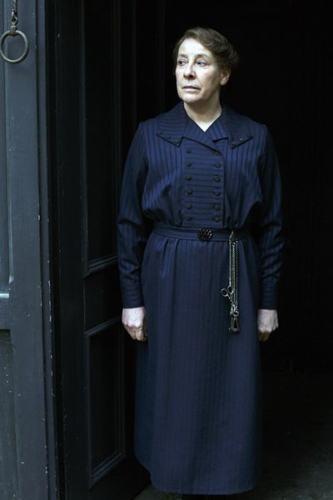
Such utilitarian purposes were the primary use of the accessory, but what a woman would consider important to have handy and the range of women wearing them extends far beyond what I had thought.
Chatelaines were used by women in most classes of society, from noblewomen to nurses. Noblewomen spent a lot of time at home in leisurely pursuits, and often enjoyed not needing to return to their rooms each time they needed something. The reason we don’t consider chatelaines an important accessory of the Georgian or Victorian eras is that because they were primarily for use in the home, women were not often photographed with them.
In researching this post I have identified four primary types of chatelaines: high society, hobby, household, and nursing. Let’s take a look, shall we?
High society chatelaines
The most common type of chatelaine that is found online today is that of the “high society” variety. This is because they were made of high quality, durable materials, used less often and thus preserved, well-looked after, and more likely to have been passed down to family members.
A high society chatelaine was used for upper-class women to keep important items with them when spending time at home. Common tools and trinkets attached included spectacle cases, miniature notebooks, perfume bottles, a tiny pouch for a coin handkerchief, and a vile for smelling salts. Here are some lovely examples.
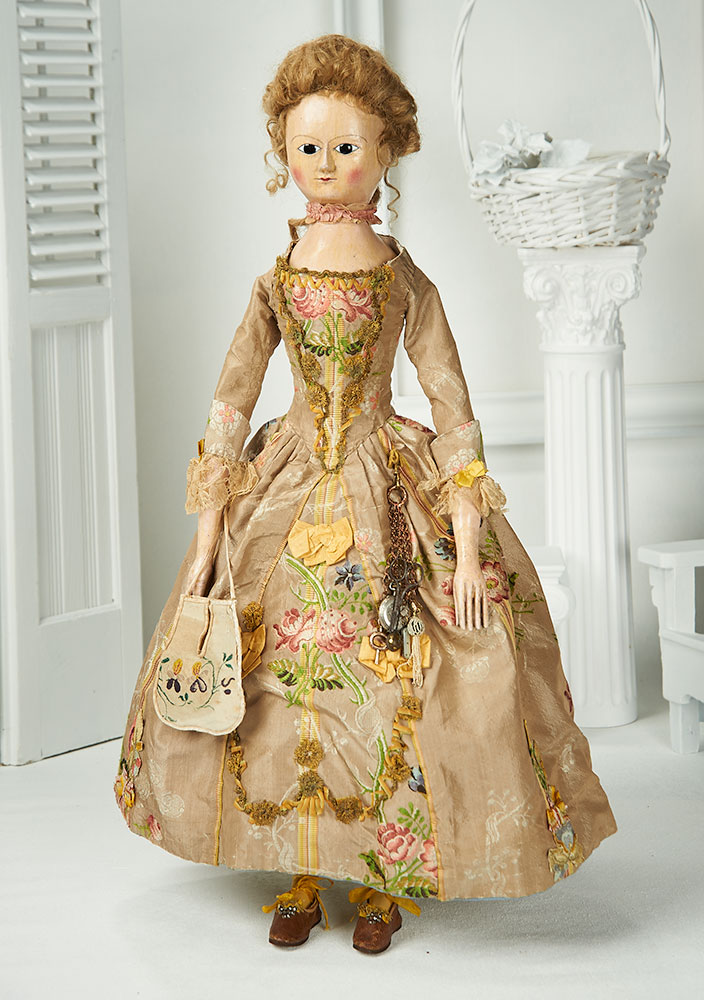
The notebooks are among the most common items carried in all chatelaines, fine ones included. And guess what? I learned in my research that for upper-class women at least, they were mostly carried for novelty purposes and not often used.
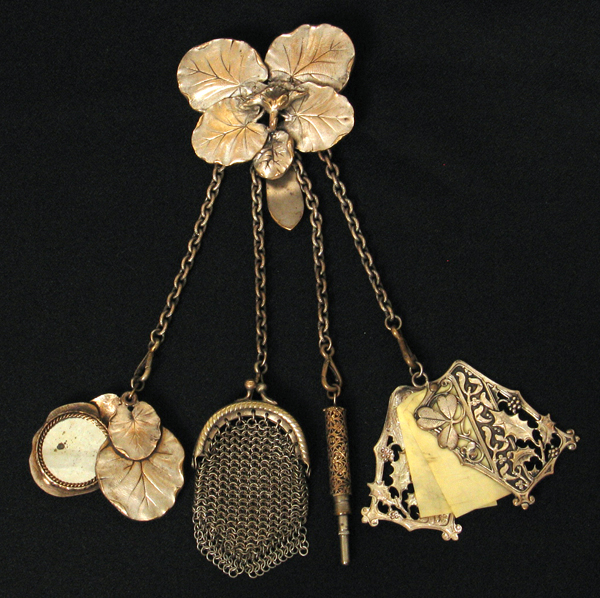
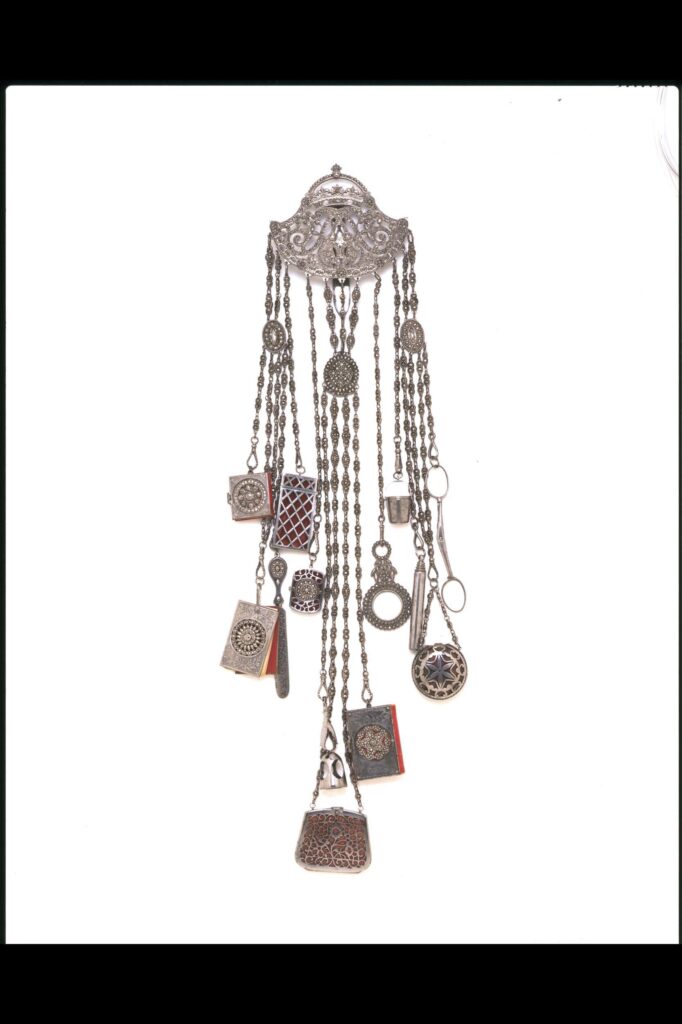
Hobby chatelaines
I was SO excited to find many “niche” chatelaines. It really gave women a chance to show off their personalities in a society that valued conformity. “Hobby” or “niche” chatelaines were worn to facilitate personal pursuits and interests. I’ve seen and heard of chatelaines for sports, painting, sewing, dog breeding, and even pipe-smoking (believe it or not).
If you had a chatelaine for your hobby, what would it look like?
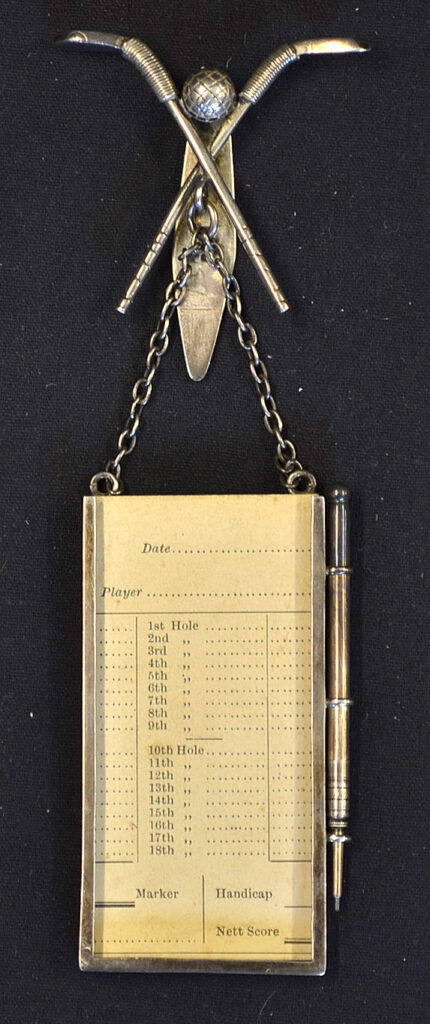
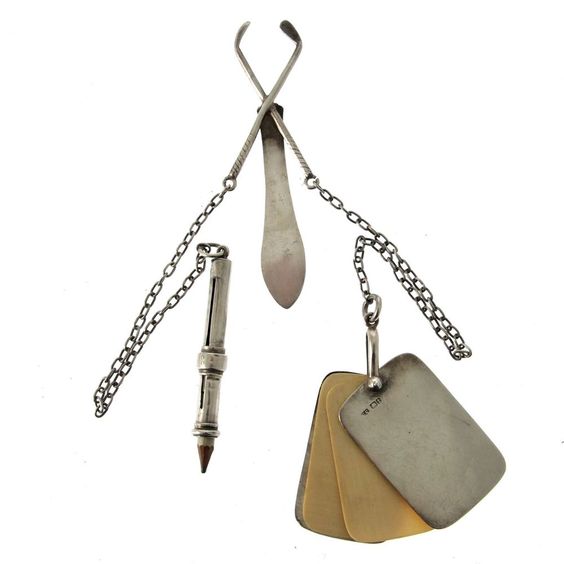

Household chatelaines
If a family had a household staff, the senior woman, often referred to as the ‘housekeeper’, would wear a heavily adorned chatelaine out of necessity and also as a status symbol. The chatelaine would be primarily used for the many keys required to manage the household, and perhaps a small selection of sewing instruments.
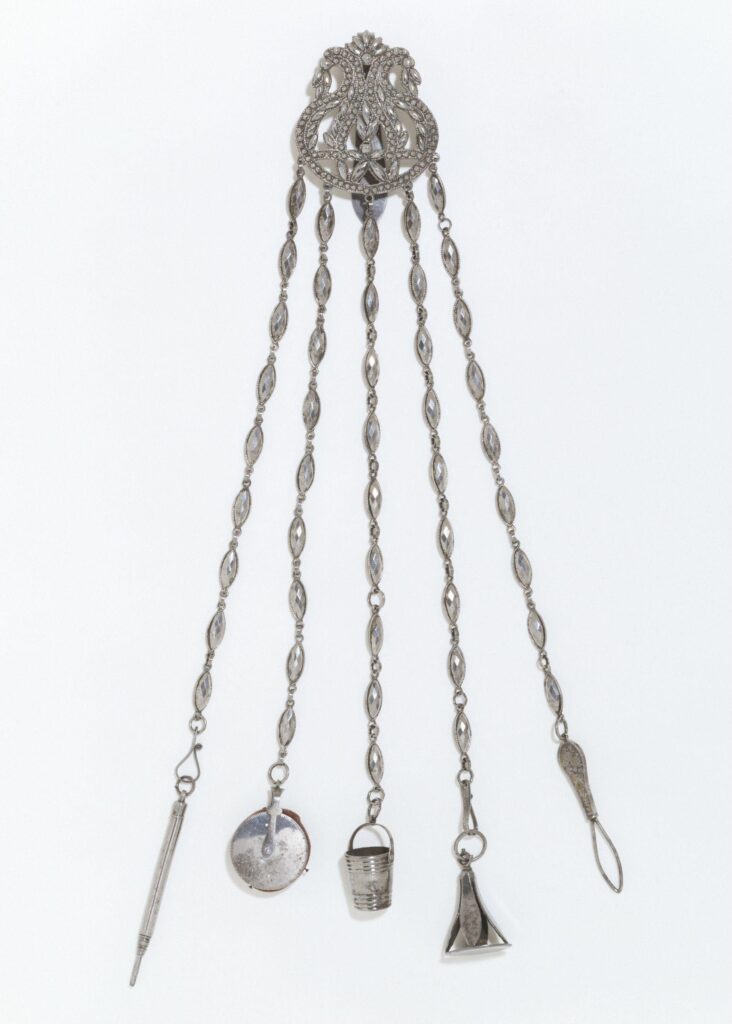
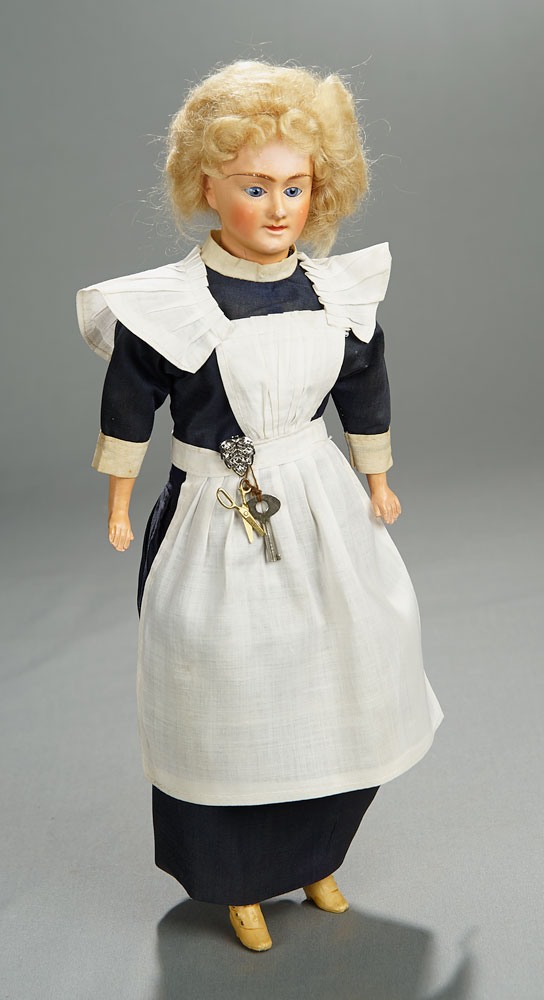
Image courtesy of Theriault’s.
Nursing chatelaines
Nursing exploded as a career for women in the late 19th century. And certainly, it was a career for which the chatelaine naturally became prominent. Rushing from room to room and performing a large variety of tasks necessitated access to various instruments in the days before pockets and fanny packs often seen worn by hospital staff today.
Common instruments included on a nursing chatelaine included scissors, a tongue depressor, a thermometer, and keys.
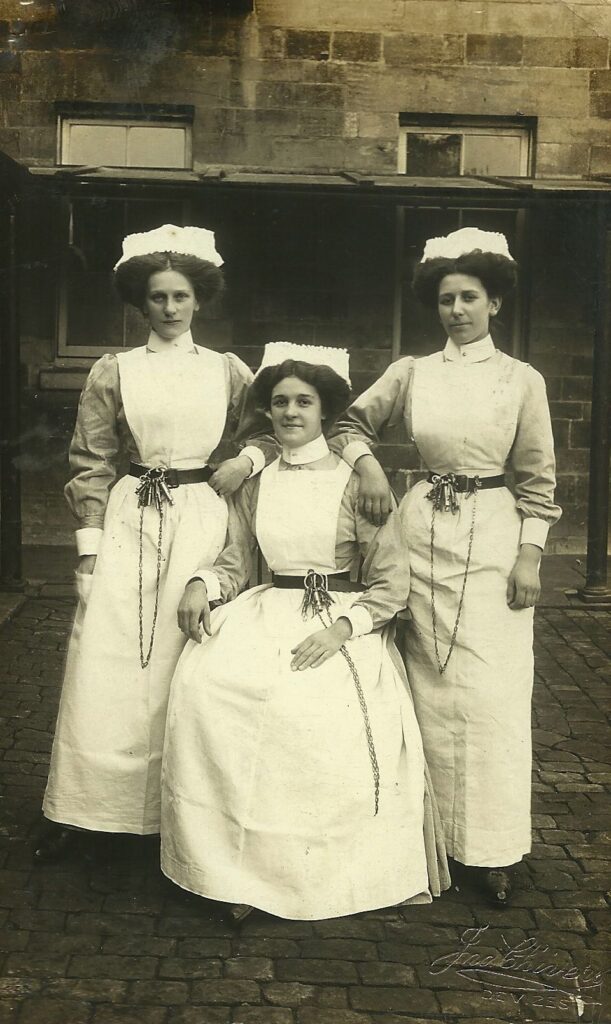
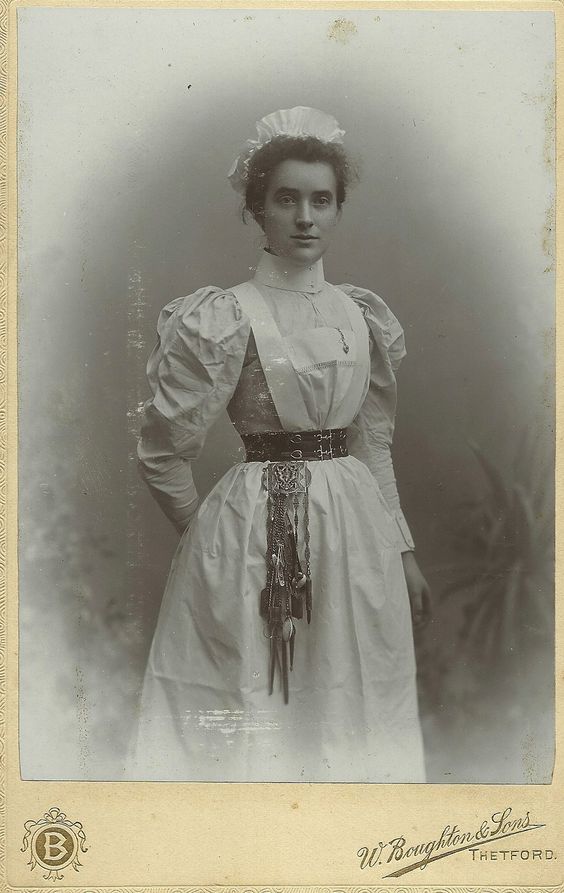
While it is easy to find images of nurses from the era wearing chatelaines, it is much more difficult to find images of the accessories themselves, as they were not seen at the time as precious items to be handed down.
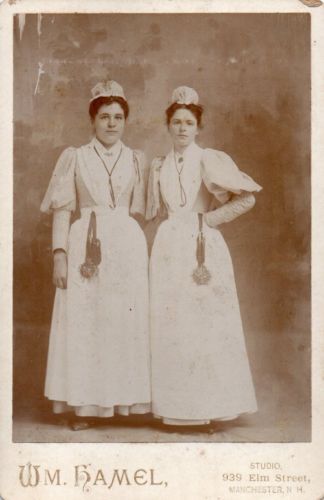
What would you keep on your chatelaine?
More curious history about nicknacks through time:
Before selfies and text messages were friendship books
A short history of the hand muff, one of history’s cutest accessories

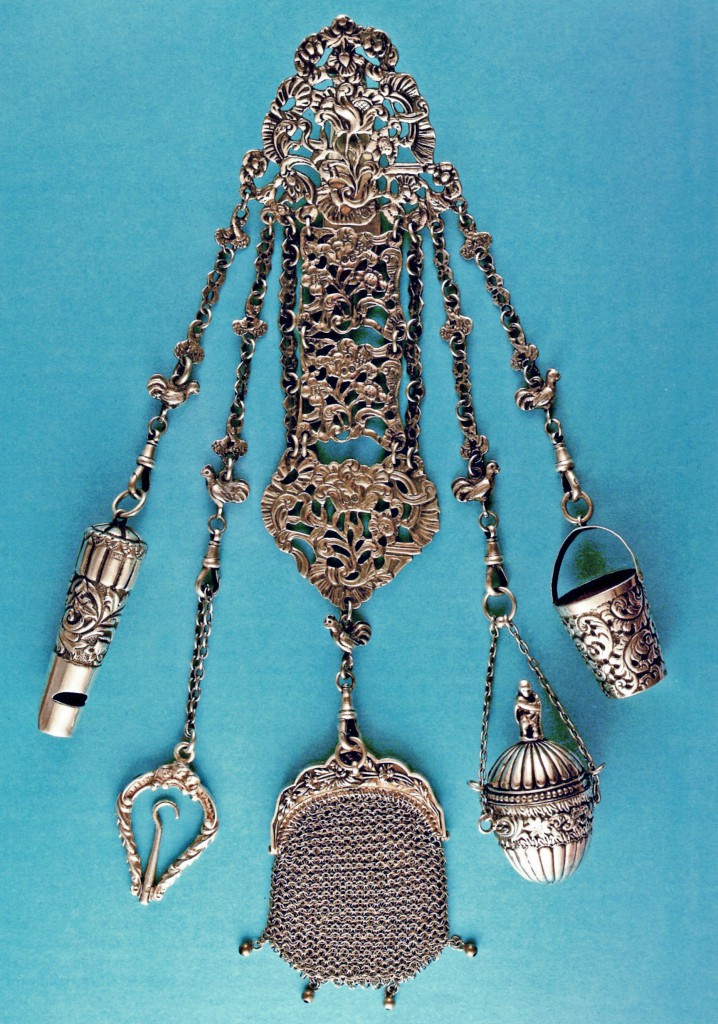
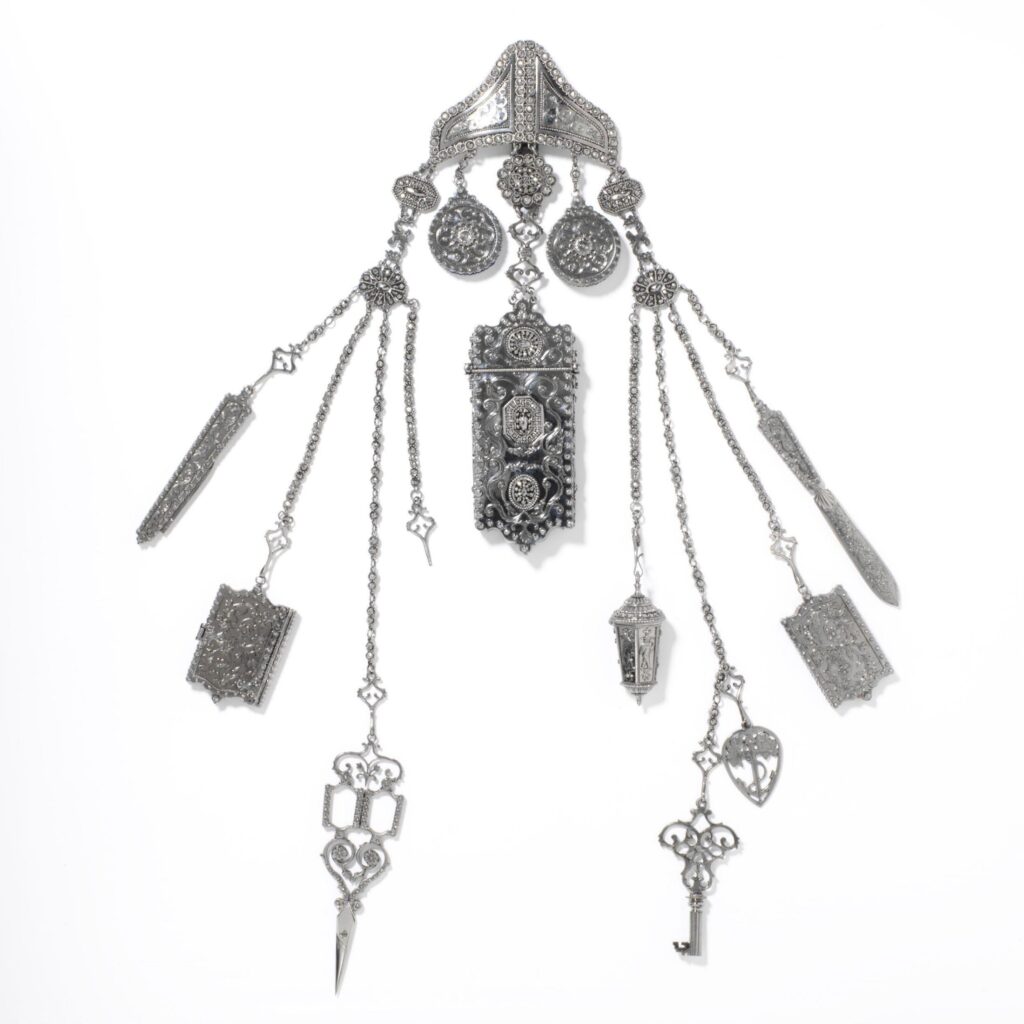
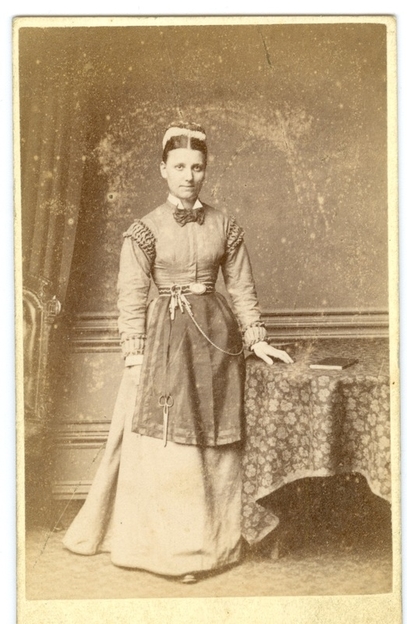
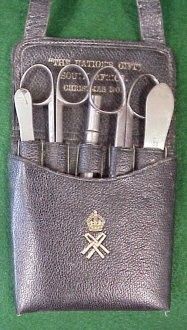













I came across your website after watching a video of mud larking in the river Thames (Nicola White tideline art on FB, if you’re wondering).
She thought she’d found an old chatelaine, a word I had never heard before. Naturally I got curious, and this article helped me very much! So fascinating, thank you!
I have one for sewing: thimble, needle case, pin cushion, and a compass for directions.
I hsve a second: for vanity-mirror, patch box, perfume, and rouge pot.
Third: stamp box, pen or pencil, note book, coin purse, this is the business one.
Lynn
Mrs. Claus keeps a pocket watch, keys for locking up Santa’s Christmas present (so he will be surprised on Christmas morning) and other North Pole locations, opera glasses for reading elf writing, large reindeer whistle, and a permanent piece of North Pole ice.
I have a Chatelain with a tiny little spoon on it. The spoon is to get ear wax from your ear to run the thread through it for easier needle threading. Perfectly gross, but a fascinating little bit of history!